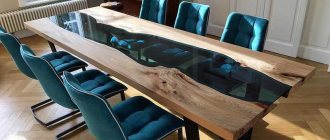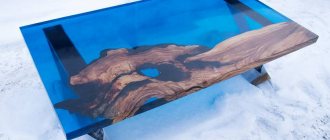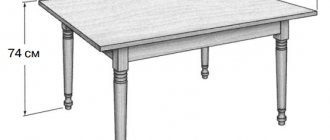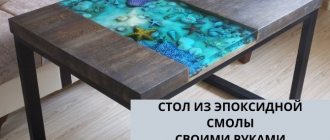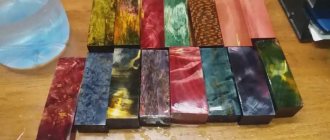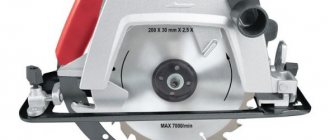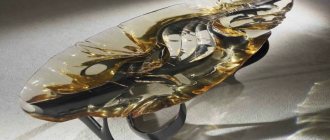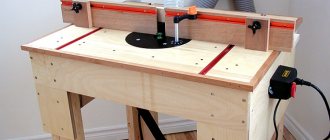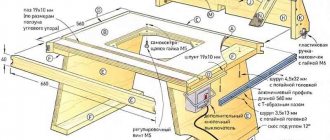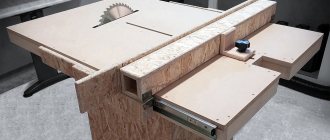Wood has been used by humans for a long time in construction and is a valuable material. Despite the active growth in the supply of other various types of materials for construction, wood still remains one of the most used. Especially in low-rise construction and for interior decoration.
In order not to be disappointed in the choice of building materials, it is important to know the properties of various rocks. When choosing wood, there are several characteristics to consider. Such as color, texture, mechanical and physical properties.
Classification of wood by heartwood and sapwood
- The color of wood depends on the type of tree, age, speed and location of growth.
- The intensity of the color depends on the concentration of tannins, resins, and dyes in the wood.
The heartwood is the dead wood inside the trunk. As a rule, the core of the trunk is darker than the sapwood. This is due to the fact that as living cells inside the trunk die, tannins and dyes are deposited in them, since the water supply pathways are clogged.
It is tannins and dyes, as well as resins and calcium carbonate that contribute to the coloring of the central part of the trunk in darker colors.
The lighter wood around the core is a layer of living cells called sapwood. The wood core is the hardest part of the trunk. It is denser than sapwood and has greater resistance to rotting.
All wood species are divided into three groups:
Heartwood species have dead cells in the center of the trunk, which are darker in color. Sound tree species include trees such as larch, oak, pine, cedar, apple, juniper, ash
Cutting down an apple tree
Sapwood does not have dead cells. Sapwood species include maple, linden, pear, birch
Cutting down a birch
Mature wood is considered to be wood where the color of the sapwood does not differ from the color of dead cells, for example, beech wood
Beech cut down
2nd class
Now that you know what first class wood is, you can characterize the rest.
Second class wood is popular as a building material. It is mainly used in furniture production and building construction. The following requirements apply to the second class:
- No knots. The presence of both knots that have already fallen out and those that are ready to fall out is not allowed.
- There should be no cracks larger than 1 mm in width or depth. Cracked parts of more than 25% of the total length are not allowed.
- No sprouts. They can appear due to damage to the tree during its growth. If the material contains sprouts clogged with bark or dead wood in a volume of more than 5% of the total, then it can no longer be classified as second grade.
- An atypical color of the structure is defective. The presence of gray or white shades on the surface of the material is called sapwood. Also, brownish tint and blue discoloration are not allowed. Their presence indicates mold damage to the material.
- There should be no defects or mechanical damage.
Classification of wood by hardness
Determining the hardness of wood is necessary to identify the operational and consumer properties of structures and other wood products. Such as resistance to scratches and dents on wooden products, wear resistance of wooden flooring, stairs, etc.
The hardness of wood is the ability to resist the penetration of harder bodies into it.
For wood cutting, the hardness class is especially important. Since the durability of the cutting tool depends on the hardness of the wooden workpiece.
A fast-growing tree has softer wood than one that grows slowly. Sapwood is softer than heartwood and mature wood.
It is customary to divide wood into three classes according to the degree of hardness:
- Soft
- Solid
- Very hard
Softwoods include poplar, chestnut, pine, fir, spruce, cedar, aspen, alder, and linden. The wood species is classified as soft, the density of which is less than 540 kg/m3
Poplar felling
Hardwoods include walnut, apple, oak, larch, birch, maple, ash, elm, and sycamore. The wood species is classified as hard wood, the density of which varies in the range of 550-740 kg/m3
Cutting down an ash tree
Very hard wood species, such as dogwood, rowan, white acacia, hornbeam, boxwood, pistachio tree and others, with a density of more than 750 kg/m3
Cutting down a hornbeam
First class (select grade)
This variety is given the designation "A". It is the most valuable, and its cost exceeds the price of second-grade material several times. This material is commonly used for shipbuilding. Deck boards, masts, and cabins are made from it. It can also be used in the automotive industry as a finish for the side structures of cargo tractors.
First class wood is ideal, and even the smallest knots are unacceptable here. However, if there is one large or two small knots located at a distance of more than two meters from each other, then such material can be classified as first class. But rotten areas are strictly not allowed. If they exist, then the product will most likely be classified as second class.
As for cracks in the structure of the material, they may be present: they are allowed to cover a section of wood by no more than 10%. Moreover, there may be cracks formed during the drying process. The wood fibers must run straight: they may deviate by only 5 degrees from the length of the material. All these requirements are strictly observed during the production and processing of wood for the selected class.
Classification of wood according to resistance to decay
Decay resistance classes are prescribed by GOST 20022.2-80. The following classes of rot resistance are divided:
- Rot-resistant sapwood of pine and ash. Kernel of cedar, ash, pine, larch, oak
- Moderately resistant to decay - sapwood of cedar, fir, spruce, larch. Spruce, beech, fir kernels
- Low resistance to decay - sapwood of birch, beech, oak, hornbeam, elm, maple. Kernel of elm, maple.
- Not resistant to rotting - linden and aspen sapwood. Birch, aspen, linden kernels
4th grade
Given that the requirements for class 4 are very low, this wood is cheap and is used for making packaging and shipping containers. This type of wood may have the same disadvantages as third-class material, however, all indicators have large tolerance values. Healthy and even fused knots and cracks at the ends and seam are allowed here. Boring shades may also be present, as well as strong grain deviations.
Areas of application of various types of wood in construction
The choice in favor of one type of wood or another should be made depending on the purpose for which the material will be used.
For example, softwood is easy to process, but complex carving elements cannot always be made from it.
Vase made of aspen wood
Hard varieties must be used to create reliable, high-strength structures.
The most common types of wood and their standard areas of application:
- Spruce, fir - timber, flooring, rafter structures, laminated veneer lumber, middle panel board
- Pine timber, furniture, flooring, windows, paneling, doors.
- Larch timber, furniture, flooring, windows, doors
- Juniper, thuja - construction timber; blinds, façade cladding, shingle covering.
- Oak furniture, plywood, parquet, half-timbered wood (structural wood), windows and doors.
- Beech furniture, stair steps, parquet.
- Ash furniture, floors.
- Alder furniture, plywood.
- Maple furniture, parquet, table boards.
Cuts of various wood species
Having information about the characteristics and scope of wood species, it is easier to choose the most suitable material for a specific task.
Subscribe to our Yandex.Zen channel
3rd grade
As the class of the material decreases, the requirements for it also decrease. The third class includes wood that does not meet the requirements of the first two. But at the same time it should not have the following flaws:
- Knots with a diameter of more than 20 mm.
- Cracks and penetrating chips. Cracks with a depth of more than 1 mm are allowed, but their length should not be more than 30% of the length of the material itself.
- Rottenness and traces of corrosion by beetles are also unacceptable. If they exist, then there should be no more than three holes or parasitic formations per linear meter.
- Inclusions or mechanical damage.
Note that third-class wood species can look decent: they are widely used even in construction (for example, saunas, bathhouses, gazebos).
